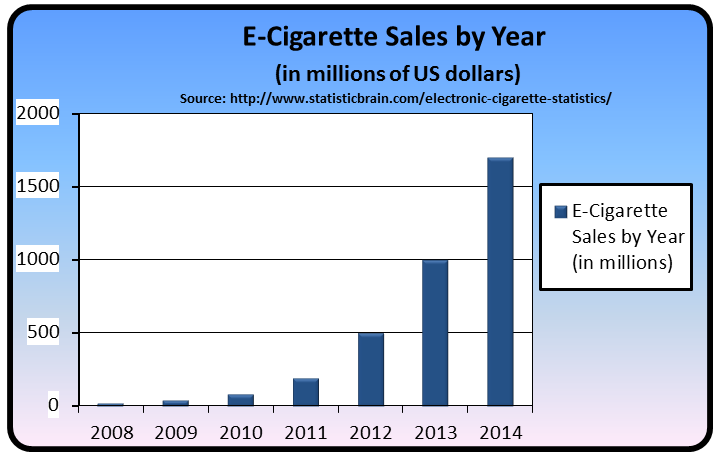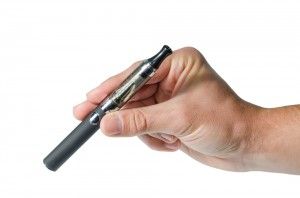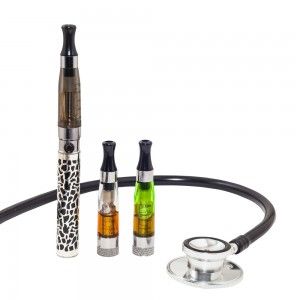The Hidden Dangers of E-Cigarettes
While cigarette smoking has decreased significantly in the past few decades, down from about 42% of the American population in 1965 – approximately 18% of Americans are still smoking traditional tobacco cigarettes. That’s a total of 42.1 million people! Smoking is the leading cause of preventable death, estimated to kill nearly one-half million Americans every year. The implications of this in terms of human life are obvious but what many don’t realize is that this comes with an annual economic price tag of over $289 Billion. These are big costs on our society.
Electronic cigarettes entered into the picture after being patented in 2003. Still unregulated by the Food and Drug Administration, there were more than 460+ brands of electronic cigarettes (as of January 2014) up from 250 brands reported in 2012. World-wide, the industry is offering at least 7,764 unique flavors for consumers to choose from, marketing a variety of flavors to a wide range of audiences from fruity flavors to “campfire”. The demand for e-cigarettes has caused a rapid boom in a still growing market, with annual sales around $1.7 Billion in 2014 (depicted in the graph below), with estimations for continued growth in 2015 and beyond.
While the marketing of traditional tobacco companies is watched to ensure that their products are only aimed toward adults (thanks to the work of anti-tobacco activists), electronic cigarettes seem to appeal to our country’s youth, and producers of electronic cigarettes are likely taking advantage of the lack of regulation by the FDA and other regulatory bodies. Most states do not restrict the sales of e-cigarettes over the internet, in addition to loose in-store regulations in many cities and states. As of January 2015, only New York City, Chicago and Los Angeles have implemented bans on smoking e-cigarettes in public places where regular cigarette smoking is not allowed, such as restaurants and offices. Other cities and counties have proposals up for debate to implement similar bans, including Austin Air’s home county of Erie County, New York.
Despite a rapidly growing market and widespread popularity, there has not been any long term research to establish if e-cigarettes are as safe as their supporters purport them to be or if there are health hazards. The quick growth in popularity has caught the attention of the FDA, Centers for Disease Control (CDC), The World Health Organization (WHO) and U.S. lawmakers, forcing safety regulators to promptly study the health effects of electronic cigarettes, in order to make appropriate recommendations on what’s best for the human body and society as a whole.
What is an Electronic Cigarette, Anyway?
Nicknamed “e-cigs” or the process of “vaping”, electronic cigarettes are battery-powered devices that mimic the sensation of smoking a real cigarette by delivering nicotine through a smoke-like vapor. In most e-cigarettes, the battery powers an atomizer, which heats up the liquid inside the device. When vapor from an e-cigarette is exhaled, it does not have any odor or particle ash, unlike the smoke of a combusted cigarette. However, just because the materials exhaled are odorless, lacking obvious byproducts in vapor form, it does not mean that what is exhaled into the air is healthy for the air quality of your home. As a provider of HEPA air cleaning machines that remove harsh chemicals and odors from the air you breathe, we take interest in all types of air quality concerns. While you may not have realized that there is such thing as ‘second-hand vapor’, the same principles of second-hand smoke apply, and you should be aware of the possible health-effects – even if they have yet to be regulated.
What is Inside an E-Cig?
The FDA’s Division of Pharmaceutical Analysis tested the liquids sold inside e-cigarette cartridges, including those with and without nicotine, and found many cancer-causing carcinogens including nitrosamines and diethylene glycol – a toxic chemical also used in antifreeze. And according to the New England Journal of Medicine’s January 2015 report, there is an alarming amount of formaldehyde in e-cigarette vapors. The aerosols exhaled from electronic cigarettes may be anywhere from five to fifteen times higher than in a traditional cigarette. Just 3 milligrams of e-cig liquid (which is on the higher-side of single-day consumption) generates 14mg of formaldehyde, whereas by comparison a whole pack of cigarettes (20 smoked in one day – also on the higher side of intake) only contains 3mg of formaldehyde in total. In addition, metals like tin, copper, and aluminum can be contained within the aerosols, which end up making their way deep into the respiratory system. Also found within e-cigarette aerosols are acetaldehyde, benzene, cadmium, isoprene, lead, nickel, nicotine, n?nitrosonornicotine, toluene, volatile organic compounds (VOCs) and fine/ultrafine particles.
Aside from the risks of personal harm from inhalation, and the indoor air quality concerns presented due to the carcinogens released into our air, it turns out that the liquid version of nicotine is also quite dangerous, as accidental poisonings are on the rise along with the size of the industry. Electronic cigarettes initiated 2,405 calls to poison control centers from September 2010 to February 2014, and among the phone calls received, 51% were involved with children 5 years old or younger – so if parents insist on using e-cigarettes, they are strongly cautioned to keep them out of the reach of children. In 2013, poison control centers saw a 300% increase in the number of cases of accidental poisonings, and out of the 1,351 cases in 2013 alone, three times as many patients were referred to the hospital as compared to 2012. The FDA collects voluntary reports of ‘adverse events’, in case you wish to see the types of injuries sustained for yourself.
One more concern, according to Emily Anne McDonald, an anthropologist at the University of California, San Francisco, is that while there is a lack of public education materials about e-cigarettes as the long-term effects are being studied, the public is therefore generally getting their information about e-cigarettes from marketers and peer groups, instead of listening to trusted scientific sources. So without government regulation and long-term scientific studies on the topic, we’re in a holding period until we learn more – it’s like the Wild West. The only guidelines we’ve received from the FDA as of now is for non-smokers to avoid using e-cigarettes. Also, it’s important to note that no specific medical recommendations for switching from smoking cigarettes to using vapor products. Many people are under the impression that e-cigarettes are a safe and effective way to cut down or completely quit smoking traditional cigarettes, despite e-cigs never being tested on those claims. In fact, a research letter published in the JAMA Journal of Internal Medicine, states that smokers who also used an e-cigarette were no more likely to quit smoking after one year, compared to smokers who didn’t use e-cigs at all. All other products marketed to help quit smoking, such as patches and chewing gum, had to be tested for their safety and effectiveness before claiming they help, whereas e-cigarettes were not studied to see if they help smoking cessation. And while it seems reasonable that those who switch from traditional cigarette smoking to electronic cigarette vaping would reduce their intake of nicotine, data actually shows a segment of the population uses both forms of nicotine inhalation therefore increasing (not decreasing) nicotine addiction.
Hope for the Future
While the Food and Drug Administration has proposed a rule to expand their jurisdiction of anything defined as a “tobacco product”, the revision to their authority is currently awaiting final action in June 2015, after the public comment period ended July 9th, 2014. Currently, the list of “tobacco products” that are allowed to be regulated by the FDA include traditional cigarettes, cigarette tobacco, roll-your-own tobacco, smokeless tobacco, and other tobacco products that the FDA regulation deems to be subject to the law and special restrictions.
If they do succeed in adding e-cigarettes to the current list of “tobacco products” restricted by the Federal Food, Drug, and Cosmetic Act; the FDA will have the ability to require the industry to list ingredients, require registration and product listings, prohibit claims without FDA permission, prohibit free samples and require pre-market reviews.
The FDA has proposed to add “tobacco products” to the same category as traditional tobacco products, which is already regulated under the “Family Smoking Prevention and Tobacco Control Act”. Adding e-cigarettes to the list of products that would give the FDA authority to require a minimum age for purchase, require health warnings on packages and advertisements, and prohibit sales in vending machines for places that allow minors.
It is our hope that as more information comes to light regarding the safety of electronic cigarettes, more individuals will realize the risks are not worth the perceived benefits of vaping, and many will avoid tobacco and nicotine use altogether. Along with the 50th Anniversary Surgeon General’s report, we hope to help make the next generation tobacco-free!
Lastly, if you’re looking for information on quitting smoking, you can refer to this previous blog post, regarding smoking and COPD, or visit the CDC’s fact sheet for “Quitting Smoking”.





